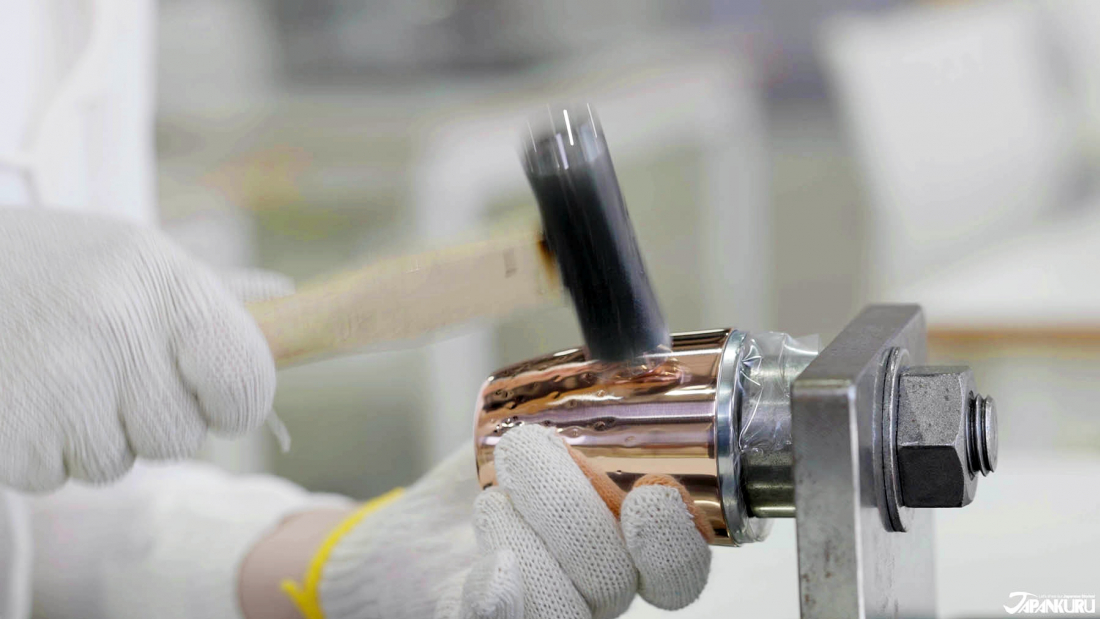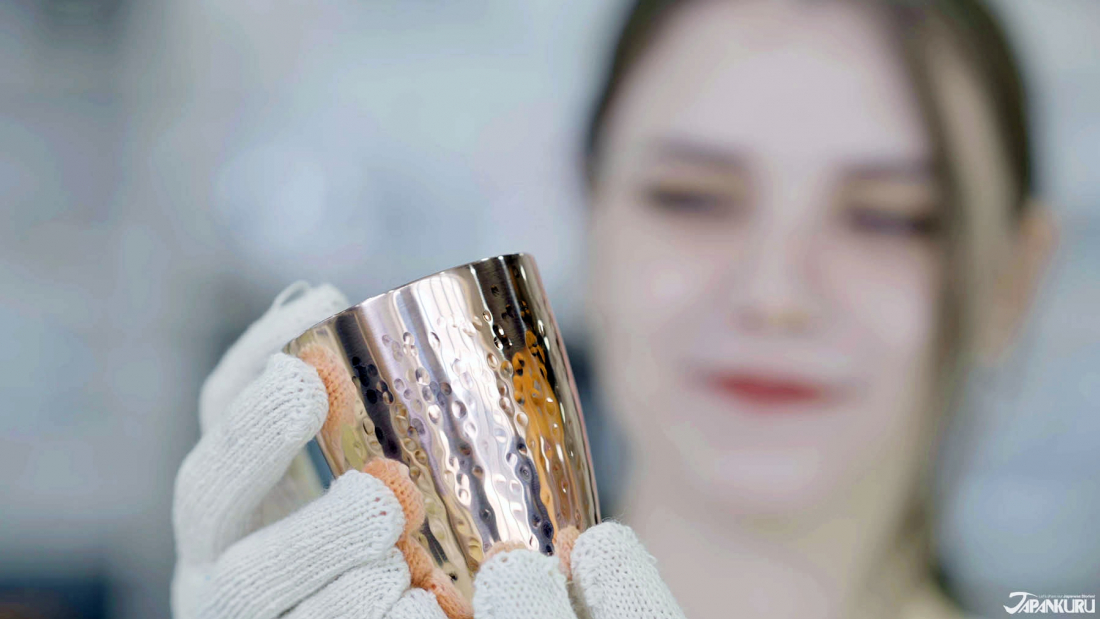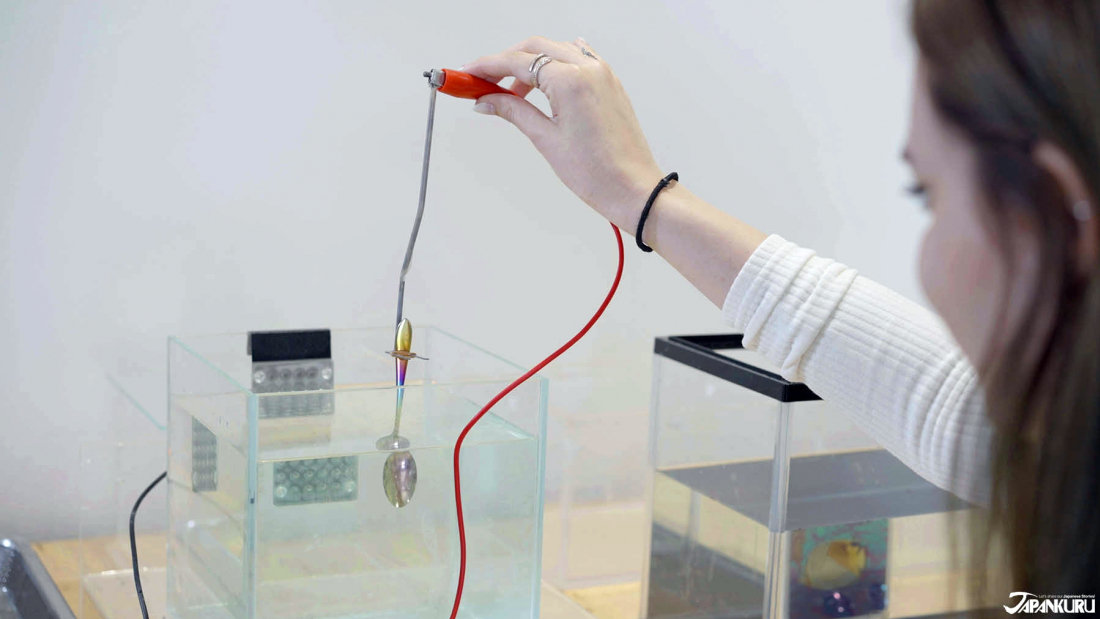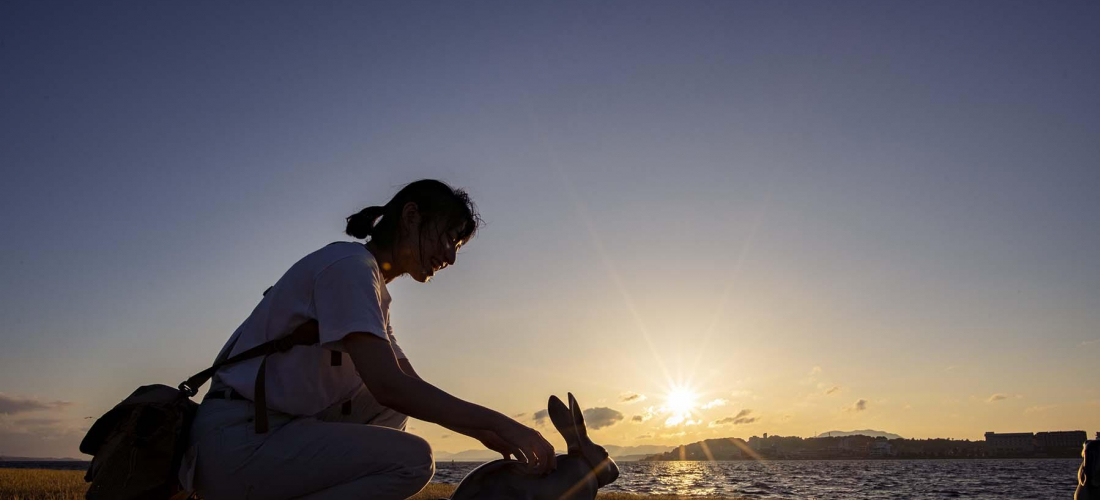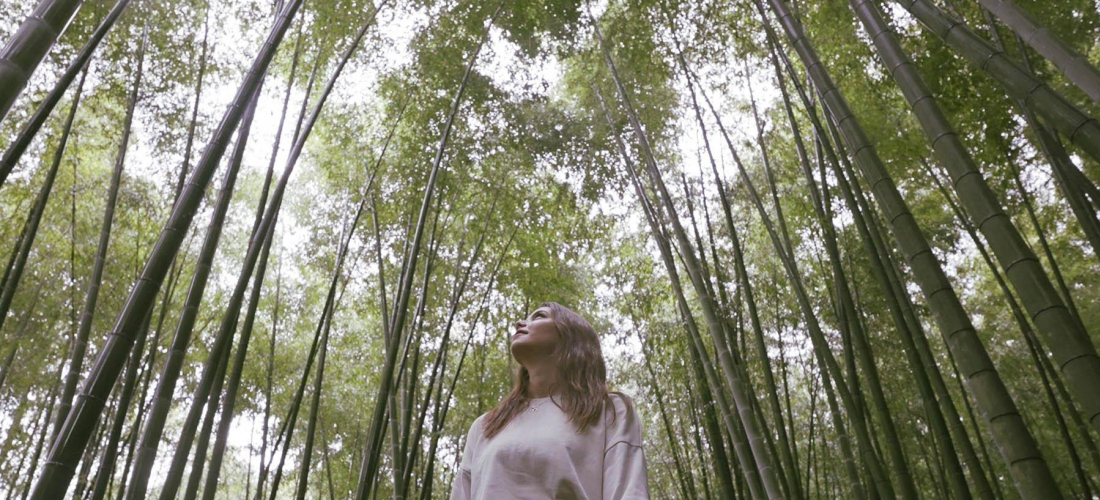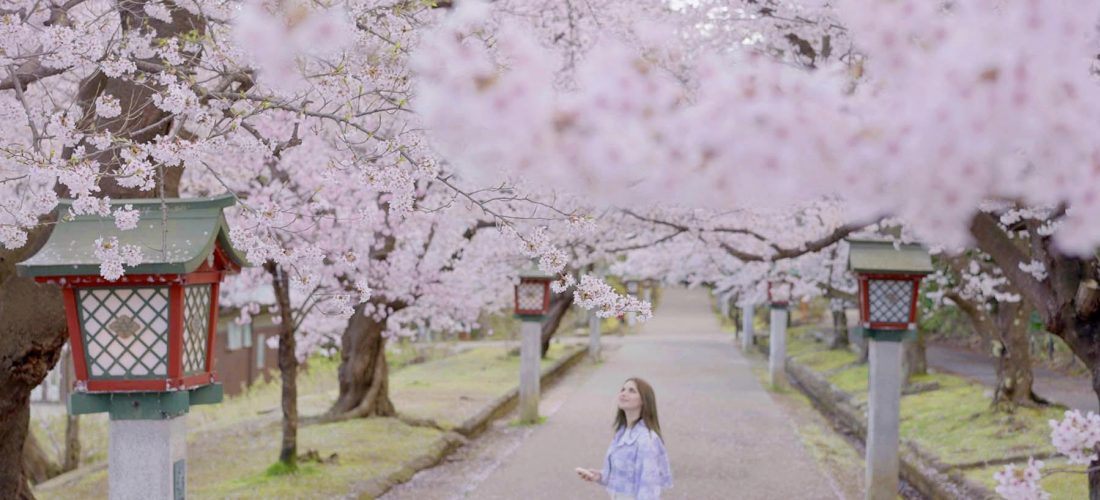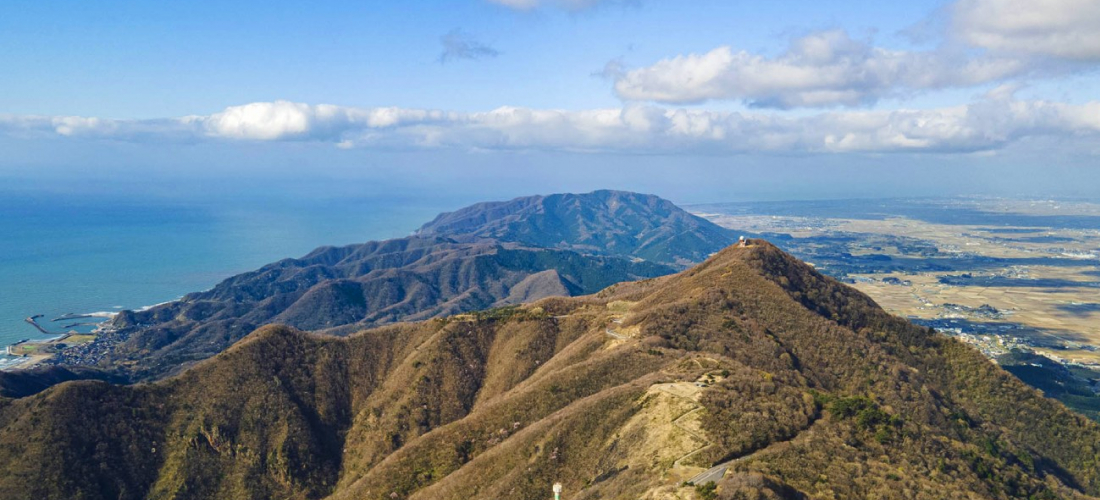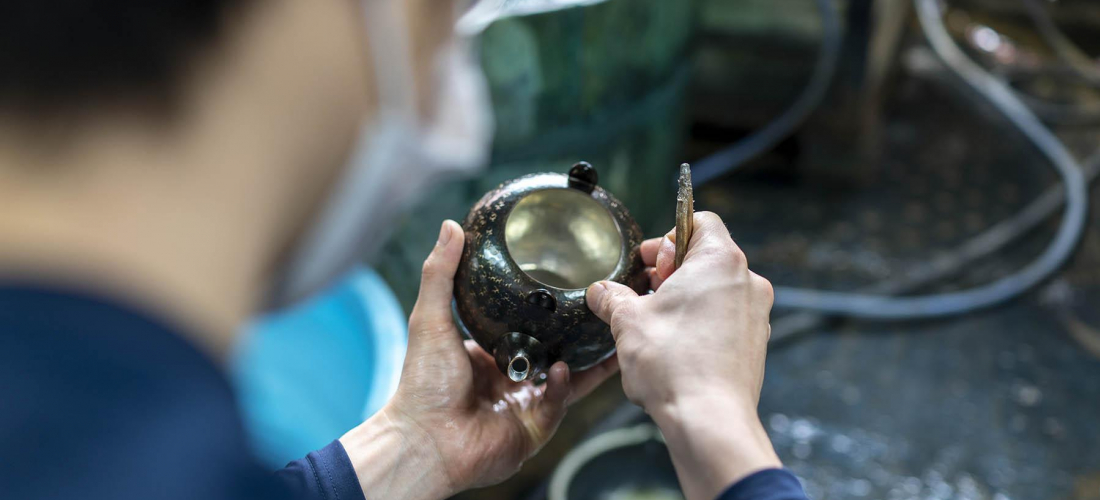
CONTENTS
Rejoignez Japankuru pour un voyage à un arrêt méconnu du shinkansen JR EAST, dans une partie du Japon immergée dans l’artisanat japonais. Découvrez les meilleurs lieux à visiter recommandés directement par les membres de JR EAST!
Tsubame-Sanjo: Ateliers d’artisans et expériences intéractives
Envie d'un voyage panoramique à bord du shinkansen japonais, en direction d'un endroit hors des sentiers battus? Les voyageurs intéressés par la culture japonaise traditionnelle apprécieront la gare Tsubamesanjō, qui se trouve juste à la frontière entre deux petites villes de Niigata. Tsubame et Sanjo ont des histoires remplies d'artisanat traditionnel et d'artisans talentueux, et non seulement vous pouvez visiter les usines ouvertes au public de la région pour voir cette industrie toujours florissante, mais vous pouvez également essayer certaines des techniques artisanales traditionnelles japonaises et découvrir la culture pour vous-même!
Se rendre à la gare Tsubamesanjō
Etant un arrêt des trains à grande vitesse JR EAST, l'accès à la gare Tsubamesanjō est extrêmement pratique pour tous ceux qui partent de Tokyo ou des environs! La gare Tsubamesanjō est l'une des douzaines de la ligne Jōetsu Shinkansen, qui partent de la gare de Tokyo et s'arrêtent à la gare d'Ueno, avant de se diriger vers la préfecture de Niigata et d'arriver finalement dans la région de Tsubame-Sanjo!
Le trajet dure un peu moins de deux heures, ce qui en fait une destination idéale pour un week-end ou une petite excursion en utilisant l'un des pass ferroviaires de JR EAST. Ce JR EAST PASS (Nagano, région de Niigata) est particulièrement pratique pour se rendre à Tsubame-Sanjo: pour 18 000 yens, le pass vous permet de prendre n'importe quels trains de la JR EAST, y compris les shinkansen et les express, ainsi que certains bus. De Tokyo à la gare de Tsubamesanjō, un trajet coûte normalement 19 000 yen l'aller-retour, alors que le passe vous permet de vous promener librement dans tout Niigata et Nagano et ce pour moins cher. Vous n'avez d'ailleurs pas besoin d'être un simple touriste pour l'utiliser, même les étrangers résidant au Japon y ont droit!
JR EAST
"About JR EAST"
Site officiel (en)
"Seat Reservation Service Online for Shinkansen and Limited Express Train in East Japan Region"
JR EAST Train Reservations (en)
Musée de matériels industriels de Tsubame: artisanats et ateliers
Le meilleur endroit pour se familiariser avec l'artisanat japonais dans la région de Tsubame-Sanjo est le musée des matériaux industriels de Tsubame. Les principaux bâtiments du musée sont remplis d'espaces d'exposition axés sur l'histoire et le développement de la région, en particulier en ce qui concerne la célèbre métallurgie de la région et d'autres métiers artisanaux. L'une des galeries du musée présente une collection de chefs-d'œuvre fabriqués dans la région, y compris "Le beau monde du cuivre de Tsuiki", qui pourrait nous fournir une bonne inspiration lorsque nous arriverons à notre destination principale: la salle de l'atelier! Celui-ci offre aux visiteurs l'occasion d'essayer certaines des techniques traditionnelles utilisées par les artisans de Tsubame et de Sanjo, de mieux comprendre comment ces objets sont fabriqués et de créer de jolis souvenirs en même temps.
Tsubame Industrial Materials Museum (燕市産業史料館)
4330-1 Omagari, Tsubame, Niigata
Official Website (en)
Atelier de fabrication de gobelets en cuivre frappé
Pour fabriquer les élégantes bouilloires à thé en cuivre, les artisans de Gyokusendo prennent en fait une feuille de métal totalement plate et la tapotent lentement avec un marteau jusqu'à ce que les côtés se dilatent, se compriment et se transforment en une forme ronde et lisse qui fait le produit fini. Cet atelier particulier vous permet de mettre la main sur les mêmes types d'outils et d'apprendre à les utiliser comme le font les experts, mais la technique particulière est un peu différente. Au lieu de commencer avec une feuille de cuivre totalement plate, votre base a déjà une forme de coupe simple, et vous ajoutez donc la texture martelée sur le métal lisse, appelée "tsuchime" (槌 目), à l'aide d'un marteau unique qui est ainsi lisse, il a une finition miroir.
En à peine 30 minutes, avec un peu de conseils de la part du personnel de l'atelier et des motifs inspirés de la vaisselle en cuivre de la région, vous vous retrouverez avec votre propre gobelet en cuivre unique. Les tasses sont d'excellents cadeaux pour tous les amateurs de bière ou les accros du café glacé dans votre vie, si vous pouvez supporter de vous séparer de la vôtre!
Atelier de fabrication de gobelet en cuivre
30 mins / 2,200 yens
Si vous êtes plus intéressé à essayer les techniques utilisées pour marteler soigneusement des feuilles de cuivre plates dans des récipients arrondis, le musée propose également des ateliers pour cela. Vous utiliserez de l'étain, et cela peut prendre un peu plus de temps, mais vous repartirez avec un joli bol faits à la main parfait pour les bijous.
Atelier de coupe de saké en étain/Bol
30+ mins / 2,500 yens
・Bonus!・ Sakaya Yayoi & Bouillon de Yahiko
Vous souhaitez utiliser votre nouvelle tasse tout de suite? Vous trouverez l'endroit idéal non loin du musée, à Sakaya Yayoi. Avec un magasin de saké en bas, une salle de dégustation à l'étage et de la bière locale disponible à la pression depuis une fenêtre à l'avant du magasin, c'est un endroit amusant pour boire des spiritueux locaux (et trouver des souvenirs consommables populaires). En fait, la boutique se spécialise dans les brasseries locales de Niigata et vend des dizaines de variétés de saké différentes de la région, ainsi que des choses amusantes comme le vin de prune local et, bien sûr, des bières de Niigata. Disponible en bouteilles, mais aussi en bière pression, vous pouvez essayer une bière assez intéressante de Yahiko Brewing, y compris des bières à base d'edamame ou de fleurs de chrysanthème, et d'autres brasseries à base de glands ou de yuzu. La bière pression vient normalement dans un gobelet en plastique, mais si vous demandez gentiment, ils pourraient la verser directement dans votre nouveau gobelet en cuivre!
Sakaya Yayoi (酒屋やよい)
1239-4 Yahiko, Nishikambara District, Niigata
Official Website (jp)
Atelier de coloration de cuillères en titane
Le deuxième atelier que l'équipe Japankuru a essayé dans la salle d'atelier était un peu moins axé sur les techniques traditionnelles japonaises, mais c'était un moyen rapide d'entrer dans l'esprit métallurgique de la région! Saviez-vous que vous pouvez changer la couleur du titane en quelques secondes? Choisissez une cuillère à café en titane ou une petite cuillère à crème glacée, et le personnel vous emmènera dans un réservoir d'eau spécial gréé pour diffuser un courant électrique, ce qui peut oxyder la couche supérieure de titane et changer la couleur! En ajustant la force du courant, vous pouvez changer votre cuillère en l'une des 24 couleurs différentes, ou même la faire glisser lentement hors de l'eau pendant que vous ajustez le courant pour créer un dégradé de couleur. Ce petit atelier est très rapide et très populaire auprès des enfants, mais nous le recommandons à tous ceux qui aiment la magie de la science!
Atelier de coloration de cuillères en titane
~5 mins / 500~700 yens
・Bonus #2!・ La taverne des artisans Kaji
Pour garder le thème de la journée, vous pouvez passer la nuit à la taverne des artisans Craftsmen's Inn Kaji! Cette petite maison d'hôtes est un kominka transformé (古民家), et l'architecture japonaise traditionnelle du bâtiment est magnifiquement préservée dans chaque chambre, de la baignoire de style japonais rétro aux tatamis au sol. Que vous finissiez par rester à Kaji ou non, nous recommandons vivement une nuit dans une chambre japonaise traditionnelle à tous ceux qui voyagent au Japon!
Cette maison d'hôtes est appelée "auberge des artisans" pour plusieurs raisons, notamment à cause des outils qui décorent les murs dès que vous entrez dans le bâtiment: des dizaines de ciseaux, avions et autres outils de menuiserie, tous astucieusement disposés sur des étagères autour du devant porte. Vous pouvez également essayer d'utiliser certains des éléments exposés pour vous-même. Ils ont même des couteaux fabriqués localement et des coupe-ongles directement de l'usine de Suwada.
Craftsmen's Inn Kaji
12-6 Motomachi, Sanjo, Niigata
4 chambres, 1~7 personnes (Contactez directement l'auberge pour les groupes de plus de 8 personnes)
Official Website (en)
Une région aux expériences culturelles uniques
Tsubame-Sanjo est une région d'artisans, et grâce à quelques ateliers interactifs, tout le monde peut avoir un petit aperçu de ce que c'est de travailler avec ses mains en utilisant ces techniques japonaises traditionnelles, et revenir avec un super souvenir que vous avez vous-même fabriqué! Si vous aimez essayer de nouvelles choses ou si vous aimez simplement les beaux objets artisanaux fabriqués à Niigata et dans le reste du Japon, montez à bord du shinkansen et faites un voyage à Tsubame-Sanjo!
▲ Les villes comme vous y êtiez dans notre vidéo de Tsubame-Sanjo!
Accès à Tsubamesanjō
▶ JR EAST Jōetsu Shinkansen Line
・Moins de 2 heures depuis la gare de Tokyo jusqu'à Tsubamesanjō Station.
▶ JR EAST PASS (Nagano, région de Niigata) Recommandé!
・5 jours d'accès aux trains JR EAST, tels que les shinkansen et "limited express" , ainsi que certains bus JR pour 18 000 yens.
・Disponible pour les voyageurs et residents étrangers.
▶ "About JR EAST"
Site officiel (en)
▶ "Seat Reservation Service Online for Shinkansen and Limited Express Train in East Japan Region"
JR EAST Train Reservations (en)
Pour plus d'informations et de news sur le Japon, consultez Japankuru pour de noux articles, et n'oubliez pas de nous suivre sur twitter, instagram, et facebook!
Details
NAME:Tsubame-Sanjo Area
ACCESS:Tsubamesanjō Station (燕三条駅)
PROFILE
Follow us @Japankuru on Facebook, Instagram, and Twitter!
COMMENT
FEATURED MEDIA
VIEW MORE
A Very Special Trip on the Ferry Sunflower #japankuru #ferrysunflower #hokkaidotrip #japanexperience #japantrip #girlstrip #oarai #tomakomai #北海道 #北海道旅行 #茨城 #홋가이도 #일본선박여행 #토마코마이 #이바라키 #북해도 #페리여행 #여행에미치다 #여자끼리 #日本渡輪 #sunflower號 #坐船旅行 #日本女子旅 #日本體驗

Japanese Makeup Shopping • A Trip to Kamakura & Enoshima With Canmake’s Cool-Toned Summer Makeup #pr #canmake #enoshima #enoden #에노시마 #캔메이크 #japanesemakeup #japanesecosmetics

⚔️The Robot Restaurant is gone, but the Samurai Restaurant is here to take its place. Check it out, and don't forget your coupon! 🍣신주쿠의 명소 로봇 레스토랑이 사무라이 레스토랑으로 부활! 절찬 쿠폰 발급중 💃18歲以上才能入場的歌舞秀,和你想的不一樣!拿好優惠券去看看~ #tokyo #shinjuku #samurairestaurant #robotrestaurant #tokyotrip #도쿄여행 #신주쿠 #사무라이레스토랑 #이색체험 #할인이벤트 #歌舞伎町 #東京景點 #武士餐廳 #日本表演 #日本文化體驗 #japankuru #japantrip #japantravel #japanlovers #japan_of_insta

Japanese appliance & electronics shopping with our KOJIMA x BicCamera coupon! 用JAPANKURU的KOJIMA x BicCamera優惠券買這些正好❤️ 코지마 x 빅 카메라 쿠폰으로 일본 가전 제품 쇼핑하기 #pr #japankuru #japanshopping #kojima #biccamera #japaneseskincare #yaman #dji #osmopocket3 #skincaredevice #日本購物 #美容儀 #相機 #雅萌 #日本家電 #일본여행 #면세 #여행꿀팁 #일본쇼핑리스트 #쿠폰 #일본쇼핑 #일본브랜드 #할인 #코지마 #빅카메라 #japankurucoupon

Odaiba's DiverCity Tokyo Plaza is home to the famous real-size 20m-tall Unicorn Gundam, and the popular shopping center has even more Gundam on the inside! Check out the Gundam Base Tokyo on the 7th floor for shelves upon shelves of Gunpla, and the Gundam Base Tokyo Annex on the 2nd floor for cool anime merchandise. Both shops have tons of limited-edition items! #pr #odaiba #tokyo #tokyotrip #japantrip #japantravel #PR #divercity #divercitytokyoplaza #tokyoshopping #gundam #unicorngundam #gundambasetokyo #anime #otaku #gunpla #japankuru #오다이바 #다이바시티도쿄 #오다이바건담 #건담 #일본건담 #건프라 #건담베이스도쿄

#okinawa #japankuru #littleuniverse #littleuniverseokinawa #오키나와 #리틀유니버스오키나와 #일본여행 #沖縄 #iias沖縄豊崎 #dmm카리유시수족관 #오키나와여행 #沖繩小小宇宙博物館 #iiasokinawatoyosaki #이이아스오키나와 #japanesekawaii #japantrip #okinawajapan #okinawatrip



